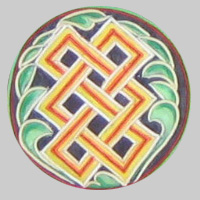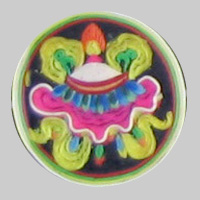Click HERE to donate to LHA Buddhism: Three Major Schools
Buddhism is one of the world’s major religions, with most estimates putting the number of adherents near 500 million. It is practiced in many different parts of the world, but especially in Southeast Asia. As it spread, new ideas and practices became attached to existing beliefs and methods, and different schools of Buddhism developed and evolved. Surviving schools of Buddhism can be roughly grouped as Mahayana, Vajrayana, and Theravada.
Mahayana Buddhism is a moderate and comprehensible interpretation of Buddhism, so that regular people, not only monks and ascetics, can follow the Mahayana path, which predominates in northern Asia and the Far East, including China, Japan, Korea, Tibet and Mongolia.
Vajrayana or Tantric Buddhism is quite different other Buddhist forms. It’s largely based on the tantric techniques in Indian scriptures. It dictates: ‘use the result as the path,’ meaning that one should try to identify with the enlightened body, speech and mind of a Buddha.
Theravada or Hinayana Buddhism is based on the original beliefs and practices of the Buddha and the early monastic elders. Theravada literally means ‘way of the elders.’ This sect predominates in southern Asia, especially Sri Lanka, Myanmar, Thailand, Cambodia and Laos.
Tibet and Tibetan Buddhism
Buddhist scriptures began arriving in southern Tibet from India as early as 173 AD, during the reign of Thothori Nyantsen, the 28th king of Tibet. During the third century scriptures reached northern Tibet. The influence of Buddhism was not great then, however, and not yet in its characteristic tantric form, for the earliest tantras had only begun to be written in India. The first significant event in the history of Tibetan Buddhism occurred in 641, when King Songtsen Gampo (c.609-650) unified Tibet. He made Buddhism the state religion and established a network of 108 Buddhist temples across the region. Conflict with the former national religion, Bön, began and would continue for centuries.
Important to Tibetan Buddhist history was the arrival of the great tantric mystic Padmasambhava in Tibet in 774, at the invitation of King Trisong Detsen. Padmasambhava merged tantric Buddhism with the local Bön religion to form what we now recognize as Tibetan Buddhism. In addition to writing a number of important scriptures, Padmasambhava established the Nyingma school, from which all schools of Tibetan Buddhism are derived.
Following the 11th century AD, Tibetan Buddhism exerted a strong influence among the peoples of Central Asia, especially in Mongolia and Manchuria. It became the official state religion by the Mongol Yuan dynasty and the Manchu Qing dynasty of China. Tibetan Buddhism spread to the West in the second half of the 20th century as many Tibetan leaders were exiled from their homeland.
Schools of Tibetan Buddhism
Within modern Tibetan Buddhism, there are 4 principal schools. Nyingmapa, “School of the Ancients,” is the oldest and the second largest after the Gelugpa. The Nyingma school is based primarily on the teachings of Padmasambhava, considered the “second Buddha.” Padmasambhava’s system of Vajrayana or Tantric Buddhism was synthesized by Longchenpa in the 14th century. The distinctive doctrine of the Nyingma school is Dzogchen, or “great perfection,” also known as ati-yoga. It employs shamanistic practices and divinities borrowed from the indigenous, pre-Buddhist Bon religion.
Kagyüpa, the “Oral Transmission School, is the third largest school of Tibetan Buddhism. Its teachings were brought to Tibet in the 11th century by Marpa, a Tibetan student of master yogi Naropa. Marpa’s most important student was Milarepa, to whom Marpa passed on his teachings. In the 12th century, the physician Gampopa synthesized the teachings of Marpa and Milarepa into an independent school. As its name indicates, the Kagyüpa school of Tibetan Buddhism places particular value on the transmission of teachings from teacher to disciple. It also stresses the more severe practices of hatha yoga. The central teaching is the “great seal” or mahamudra, which is a realization of emptiness, freedom from samsara and the inspeparability of these two. The basic practice of mahamudra is “dwelling in peace,” and it has thus been called the “Tibetan Zen.” Also central to the Kagyupa schools are the Six Doctrines of Naropa (Naro Chödrug), which are meditation techniques that partially coincide with the teachings of the Tibetan Book of the Dead.
Sakyapa is today the smallest of the four schools of Tibetan Buddhism. It is named for the Sakya (“Gray Earth”) monastery in southern Tibet. The Sakya monastery was founded in 1073 by abbots from the Khön family. The abbots were devoted to the transmission of a cycle of Vajrayana teachings called “path and goal,” the systemization of Tantric teachings, and Buddhist logic. The Sakyapa school had great political influence in the 13th and 14th centuries.
Gelugpa, “School of the Virtuous,” is the youngest of the Tibetan schools, but is today the largest and the most influential. It was founded in the late 14th century by Tsongkhapa, who enforced strict monastic discipline and raised the standards of learning for monks, while continuing to respect the Vajrayana tradition of esotericism prevalent in Tibet. Tantric and magical rites became allowed only in moderation. Practices focused on achieving concentration through meditation and arousing the bodhisattva within. Three large monasteries were established near Lhasa: at Ganden in 1409, Drepung in 1416, and Se-ra in 1419. The abbots of the Drepung monastery first received the title Dalai Lama in 1578. The Gelugpa school has held political leadership of Tibet since the Dalai Lamas were made heads of state by the Mongol leader Güüshi Khan in 1642. |
|
Eight symbols appear throughout the
ages in Buddhist art. Below are details
of paintings on a shrine in the Monastery
of Triten Norbutse in Kathmandu, Nepal.

Lotus Flower: Purification

Golden Fish: Fearlessness

Eternal Knot: Interdependence

Dharma Wheel: Transformation

Banner: Triumph Over Samsara

Treasure Vase: Prosperity

Conch: Sound of Dharma

Umbrella: Protection
|

